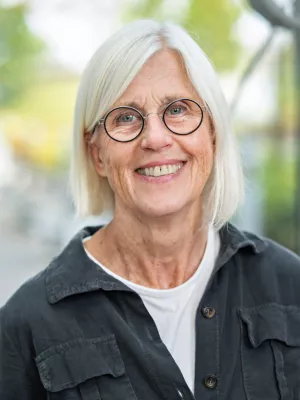
Carina Sjöholm
Senior lecturer, associate professor

Att skapa och marknadsföra plats med hjälp av fiktion
Author
Summary, in English
Travel in the footsteps of cinema is an expanding market, both in Sweden and internationally. Travel habits are changing, and the fact of a good number of people planning their journeys in order to follow in the footsteps of fictitiousn characters, or alternatively follow a particular route in order to experience first-hand something
they saw at the cinema or on television, has become an important potential for the tourist industry to harness.
Film versions of, and interest in, author Henning Mankell’s Inspector Kurt Wallander in Ystad, Skåne, are one of many instances of the economic synergies between film, location and tourism. Regionally produced film is being looked on more and more as an important growth factor, but also as part of the experience tourist industry. In Skåne the aim of mobilising the region and addressing cultural tourism on a wide front already existed before being put into words in cultural policy action plans at national level. For the region’s part, the film adaption and interest in Kurt Wallander’s fictitious person have been a way of maximising tourism, and one which has succeeded beyond expectation.
This article sets out to show, in concrete terms, how a market emerges, is sustained and, above all, is used as a “concept” to do with film, location and tourism. In the expanding marketing of film, landscape and production of “experiencescapes”, new commercial spaces have been created and cultural fields are getting more mixed up than ever before. Films expressly concerned with a particular place or expressly shot in a particular location are not infrequently looked on as free marketing, and this insight has grown. It is often a case of media giving each other a leg-up: a book which has been made into a film has even more impact than that “just” a film or a book. People have been aware of this all through the history of cinema.
they saw at the cinema or on television, has become an important potential for the tourist industry to harness.
Film versions of, and interest in, author Henning Mankell’s Inspector Kurt Wallander in Ystad, Skåne, are one of many instances of the economic synergies between film, location and tourism. Regionally produced film is being looked on more and more as an important growth factor, but also as part of the experience tourist industry. In Skåne the aim of mobilising the region and addressing cultural tourism on a wide front already existed before being put into words in cultural policy action plans at national level. For the region’s part, the film adaption and interest in Kurt Wallander’s fictitious person have been a way of maximising tourism, and one which has succeeded beyond expectation.
This article sets out to show, in concrete terms, how a market emerges, is sustained and, above all, is used as a “concept” to do with film, location and tourism. In the expanding marketing of film, landscape and production of “experiencescapes”, new commercial spaces have been created and cultural fields are getting more mixed up than ever before. Films expressly concerned with a particular place or expressly shot in a particular location are not infrequently looked on as free marketing, and this insight has grown. It is often a case of media giving each other a leg-up: a book which has been made into a film has even more impact than that “just” a film or a book. People have been aware of this all through the history of cinema.
Department/s
- Department of Service Studies
Publishing year
2012
Language
Swedish
Pages
26-41
Publication/Series
Bebyggelsehistorisk tidskrift
Issue
64
Full text
Document type
Journal article
Topic
- Social Sciences Interdisciplinary
Keywords
- Place
- Film- and Literary tourism
- Culture tourism
- Cultural policies
- Media
Status
Published
ISBN/ISSN/Other
- ISSN: 0349-2834

